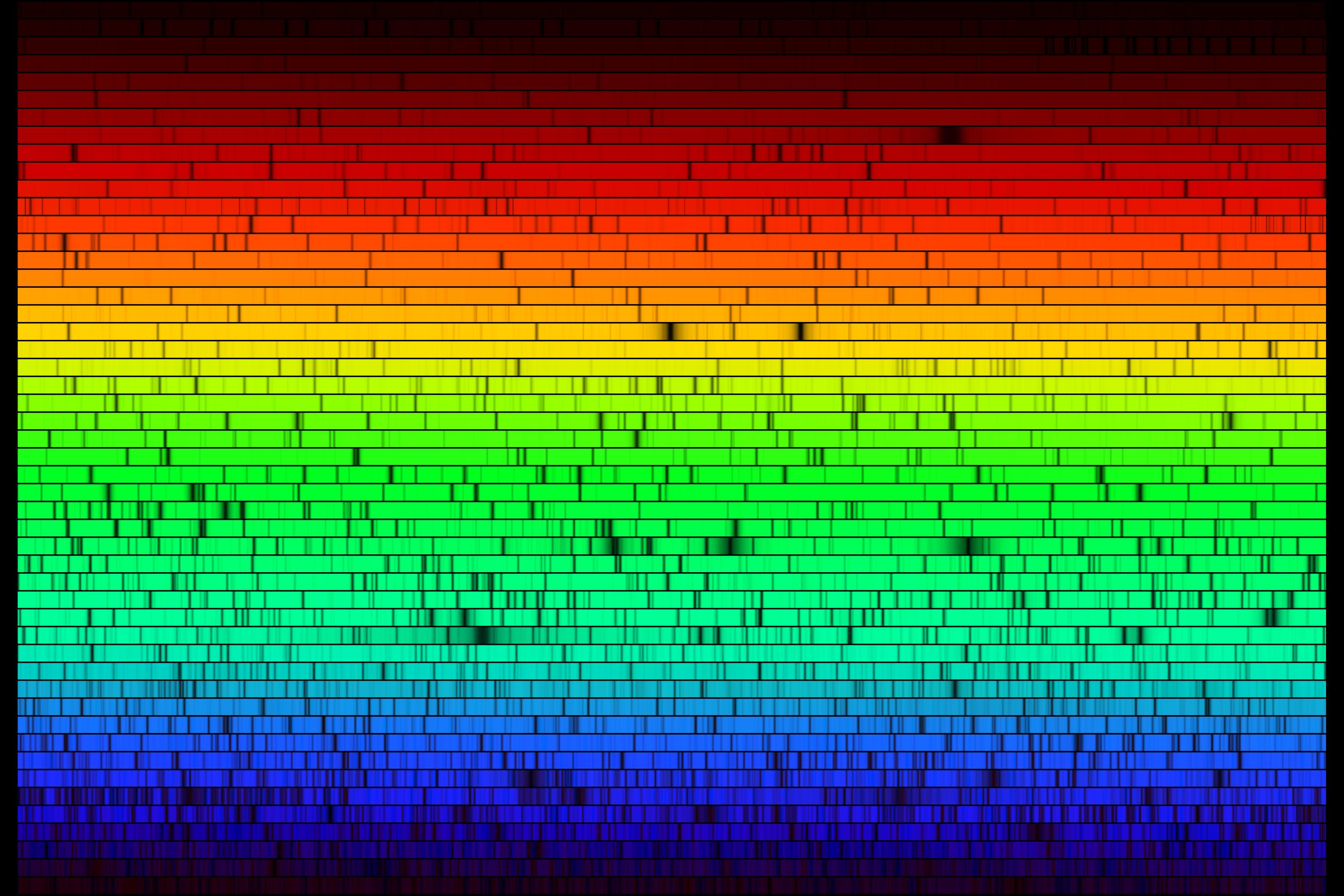
Copyright:Nigel Sharp
原文:
It is still not known why the Sun’s light is missing some colors. Here are all the visible colors of the Sun, produced by passing the Sun’s light through a prism-like device. The spectrum was created at the McMath-Pierce Solar Observatory and shows, first off, that although our white-appearing Sun emits light of nearly every color, it does indeed appear brightest in yellow-green light. The dark patches in the above spectrum arise from gas at or above the Sun’s surface absorbing sunlight emitted below. Since different types of gas absorb different colors of light, it is possible to determine what gasses compose the Sun. Helium, for example, was first discovered in 1870 on a solar spectrum and only later found here on Earth. Today, the majority of spectral absorption lines have been identified – but not all. New Translations: APOD is now available in Croatian and Montenegrin.
中文翻譯:
☀️ 為什麼太陽的光線缺失某些顏色仍然不明朗?透過一個如棱鏡般的裝置,我們可以觀察到太陽的可見光譜。這個譜線是在麥克馬斯-皮爾斯太陽觀測台創建的,首先顯示出我們的白色太陽雖然發射幾乎所有顏色的光,但實際上在黃綠光的部分特別明亮。🌈
譜線中的黑暗斑塊是由於太陽表面或以上的氣體吸收了下面發出的陽光造成的。由於不同類型的氣體會吸收不同顏色的光,因此我們可以確定太陽組成的氣體。例如,氦是在1870年通過太陽光譜首次被發現,之後才在地球上找到。🌍 現今,大多數的光譜吸收線已經被識別,但仍然有一些尚未解明。
🔍 #太陽光譜 #科學知識 #天文學 #陽光 #氣體組成 #氦 #麥克馬斯皮爾斯觀測台 #光譜分析 #自然之美 #科學探索
來源:NASA每日圖片


